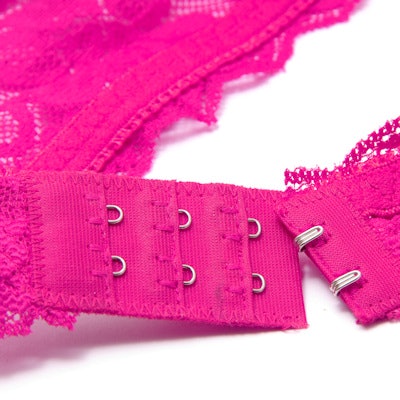
With no typical intermaxillary fixation materials available, clinicians used bra hooks to facilitate the treatment of a woman's condylar fracture, according to a technical note published on December 13 in the British Journal of Oral and Maxillofacial Surgery.
Bra hooks provided the essential hardware that was affixed to the 30-year-old woman's maxillary and mandibular arches. The team's emergency fix allowed her treatment to be completed, the authors wrote.
This technique "represents a simple, economic, and quick emergency alternative to add to a surgeon's armamentarium," wrote the group, led by Dr. Bruce Pynn, of the department of dentistry and oral and maxillofacial surgery at Thunder Bay Regional Health Sciences Center in Thunder Bay, Ontario, Canada.
Case details
The 30-year-old, pregnant assault victim had sustained a nondisplaced condylar fracture. After clinicians discussed conservative treatment options, the patient selected the short-term treatment of intermaxillary fixation with elastic to manage her jaw discomfort and to promote healing. The woman agreed to functional therapy and a modified soft diet after the procedure, the authors wrote.
Unfortunately, none of the typical intermaxillary fixation materials were available. Therefore, clinicians opted to use bra hooks, which provided the necessary hardware for the fixation and therapy after the procedure, they wrote.
The design of a bra hook provides two superior loops that allow for the application of a circum-dental wire fixation and a rigid well-formed hook to secure an intermaxillary fixation. These hooks are beneficial because they sit superficially on the labial aspect of the teeth, the authors wrote.
After the hooks were sterilized, they were secured to the maxillary and mandibular arches while the woman was under local anesthesia. The team then attached the elastic, and within 15 minutes the procedure was completed.
Considerations for condylar fracture
When there is minimal displacement at a condylar fracture site, conservative management strategies are often used. Treatment choices include functional therapy without a period of intermaxillary fixation or about two weeks of fixation followed by functional therapy, a soft diet, and pain medication as needed.
A variety of devices can be used for intermaxillary fixation procedures, including orthodontic dental brackets, gunning splints, arch bars retained with wires, and modified arch bars with self-tapping screws or hooks. The preferred technique or device depends on the nature of the fracture, duration of fixation required, utilization of adjunct functional elastic therapy, and availability of materials.
For this patient, the use of bra hooks for intermaxillary fixation proved to be a simple, minimally invasive, and inexpensive technique. The use of bra hooks is best suited for patients with a full complement of teeth, Pynn and colleagues noted.
"They are well tolerated by the patient, and it is easy for patients to change elastics and maintain good oral hygiene," they wrote.




















